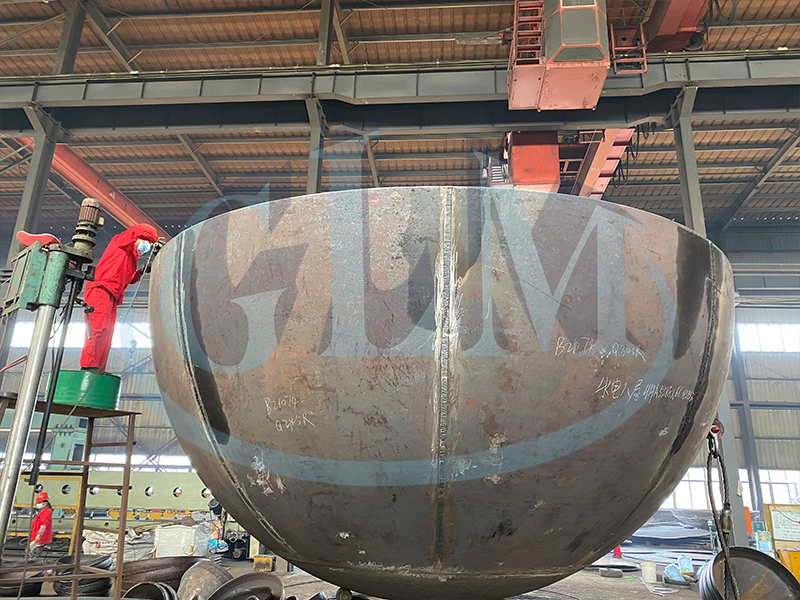Shell – The shell in most containers is what provides the longitudinal length of the container. Or all vessels, the thickness of the shell depends on the pressure the shell will see (internal and external), plus any other loads from brackets, nozzles or other accessories. Most shells are round. This is partly based on the economy of forming the shell, but mainly due to the even distribution of force over the circle.
Head – The head is one of the end caps of a cylindrical pressure vessel. The inward pressure of each type of head determines its range of use.
1. Dish radius – also known as crown radius. It is the main radius of the formed head, usually measured from the inside.
2. Inside Depth of Dish- measurement from the inner center of the head to the tangent line.
3. Knuckle Radius- also known as the corner radius. It is the forming radius of the head that transitions the dished part to the straight flange. This process is completed on the flanging machine.
4. Straight flange – is the straight part of the head measured from the tangent to the edge of the head. The industry standard is 1 1/2 “.
5. Tangent – The point where the radius of the steering knuckle on the head intersects with the straight flange. Refers to the contact point between the cylinder and the steering knuckle part of the container head, tangent. The distance from a tangent on one head to a tangent on another head is called a straight line or tangent to a tangent. Click to see more information about the inside of the vessel.
Post time: Jul-24-2023



